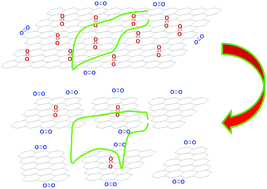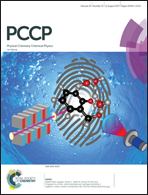Edges of graphene and carbon nanotubes with high catalytic performance for the oxygen reduction reaction†
Abstract
We invented a practical and simple wet-grinding method to break conventional graphene sheets and CNTs for the production of new graphene/CNTs with adequate edge density (about 25 000 atoms per graphene-fragment of about 1 μm2 in size) and no detectable changes in intrinsic defects, extrinsic impurities, and even surface-area. Measurements using the standard cyclic voltammetry, rotating disk electrode and rotating ring-disk electrode techniques all confirm that such mildly fragmented graphene, as well as carbon-nanotubes treated similarly using this wet-grinding method, can facilitate the fast 4-electron oxygen reduction reaction (ORR) pathway. Our first-principles computational studies of the ORR on graphene, as well as the relevant known data in the literature, support an intriguing proposition that the ORR can be speeded up simply by increasing the edge-density of graphene. The adsorption of O2 involving both oxygen atoms, which causes O–O elongation, is best facilitated at the edge of graphene, facilitating a multi-step 4-electron ORR process.



 Please wait while we load your content...
Please wait while we load your content...